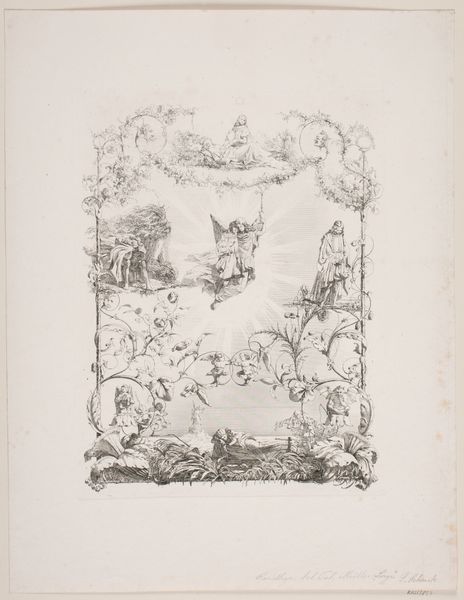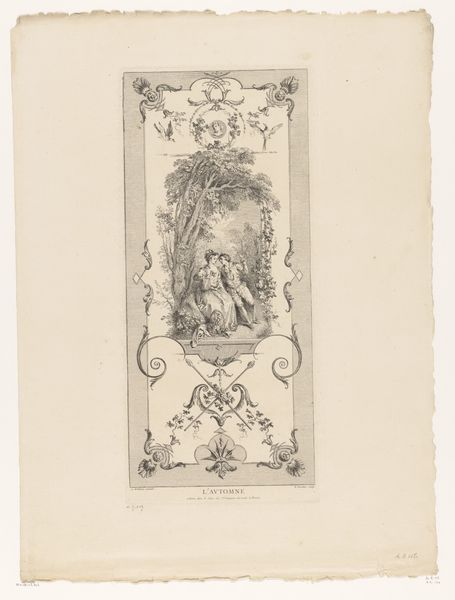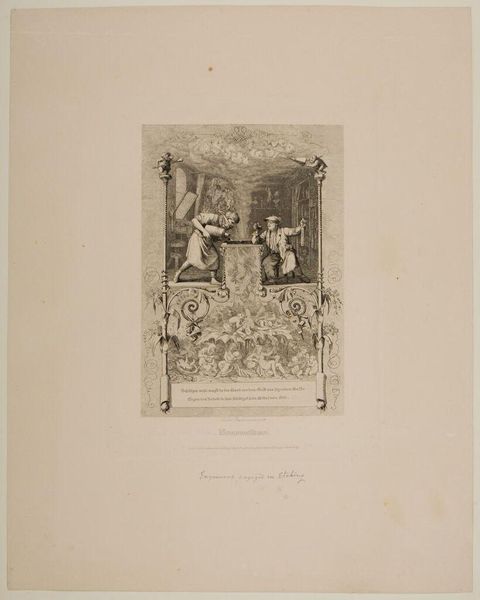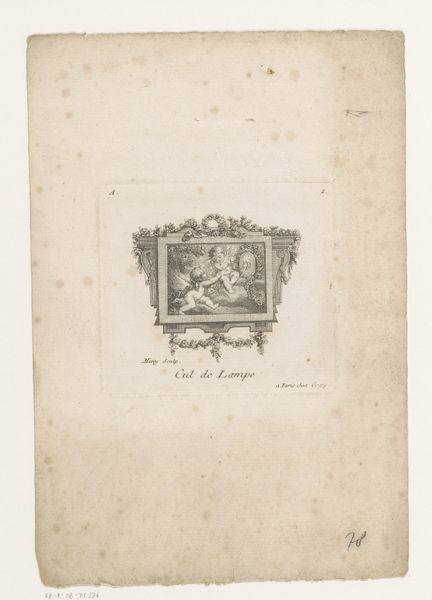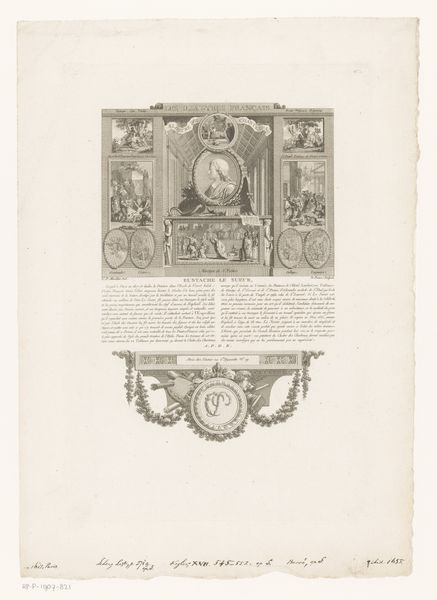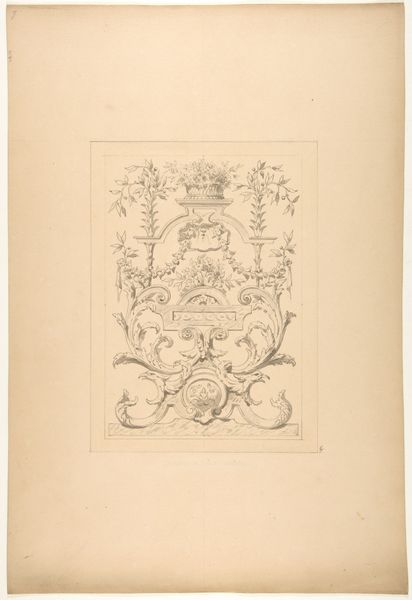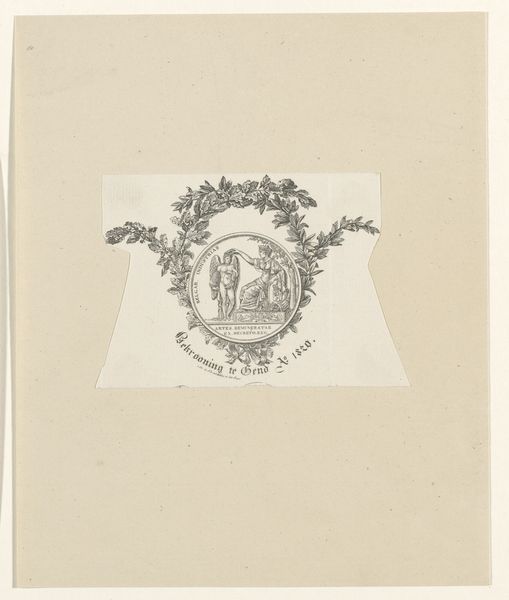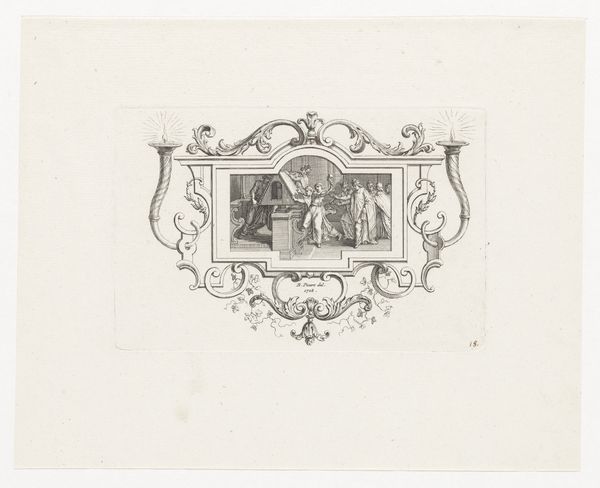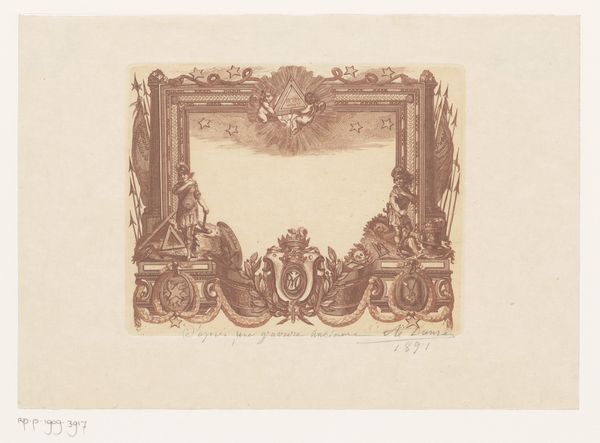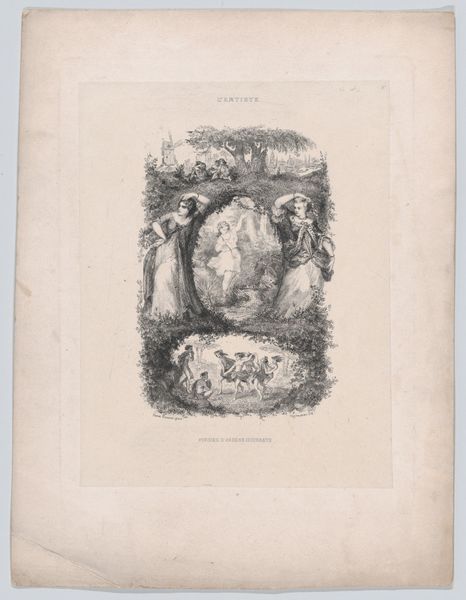
Schilderij in een gedecoreerde lijst met duiven, instrumenten en gebladerte 1863
0:00
0:00
drawing, print, etching, paper
#
drawing
# print
#
etching
#
landscape
#
paper
#
genre-painting
Dimensions: height 229 mm, width 154 mm
Copyright: Rijks Museum: Open Domain
Curator: What an intricate scene. Edouard Lièvre created this etching titled "Schilderij in een gedecoreerde lijst met duiven, instrumenten en gebladerte," or "Painting in a decorated frame with doves, instruments and foliage" in 1863. Editor: It strikes me as something found tucked away in an old study—an intimate portrayal with detailed flourishes that feels very domestic. The image within a frame design… it’s clever. Curator: The frame itself becomes a crucial element. How does the incorporation of musical instruments, doves, and foliage impact our understanding of the genre painting within the frame? What narratives might Lièvre be hinting at regarding class and leisure? Editor: Well, consider the materials and production. It’s an etching, a process involving labor, skill, and the making of multiple copies. This piece challenges the boundary between the decorative and high art through mass production and availability. The subject of a leisurely outdoor scene combined with detailed decoration gives commentary on accessible artistry and its value. Curator: It is also relevant to view it from the framework of gender and spectatorship; note the active and passive roles played by the figures. The woman reclining passively while the male figure appears dominant. Are we to consider it a depiction of patriarchal social norms? Editor: You're right; there’s also the frame's role as an artificial boundary and also the actual barrier between classes. In both, men are often portrayed within those power structures, just like in the print, so they often retain artistic power as the subjects for interpretation for the rest of the observers as well. How far does accessibility really stretch? Curator: Looking closely at the craftsmanship of the etching technique opens up a discussion about accessibility and taste during that era. Its themes touch upon desire and aspiration, particularly in light of gendered societal norms. Editor: The materiality speaks to how the work could become part of private domestic space; how accessible artistic ownership became for middle class patrons, but also challenges the hierarchy, through the democratized circulation of images via etching. Curator: The artist creates this world inside a world. A sort of… nesting doll of realities, and its comment on French society then still resonates now. Editor: Exactly. By blurring boundaries, Lièvre provides not only an artwork but a mirror reflecting the values, aspirations, and even contradictions within that time.
Comments
No comments
Be the first to comment and join the conversation on the ultimate creative platform.
